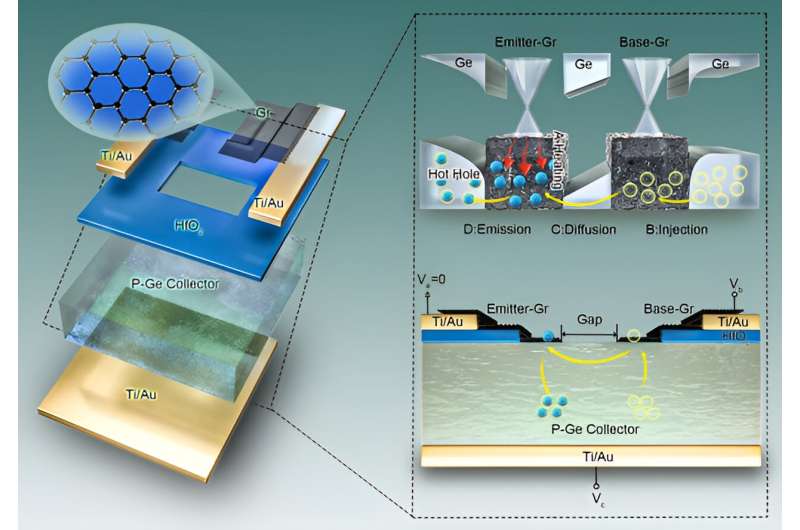Utilizing low-dimensional materials like graphene, the team developed a hot-emitter transistor with good performance metrics, offering multiple applications for future high-performance, low-power devices in the post-Moore era.

Researchers are advancing transistor technology to address challenges associated with shrinking sizes of transistors in integrated circuits. Developing transistors with novel operating principles is essential for improving circuit performance. Hot carrier transistors, which leverage the kinetic energy of carriers, offer potential enhancements in speed and functionality. Traditional methods of generating hot carriers have constrained their performance.
A research team from the Institute of Metal Research (IMR) at the Chinese Academy of Sciences has introduced a new mechanism for generating hot carriers, termed stimulated emission of heated carriers (SEHC). The team also developed a hot-emitter transistor (HOET) that achieves an ultralow sub-threshold swing of less than 1 mV/dec and a peak-to-valley current ratio exceeding 100. This research provides a prototype for a low-power, multifunctional device suitable for the post-Moore era.

Low-dimensional materials, such as graphene, present opportunities for developing new hot carrier transistors due to their atomic thickness, electrical and optical properties, and defect-free surfaces. These materials can easily form hetero-structures with other substances, offering diverse energy band combinations. The researchers created a hot-emitter transistor by combining graphene with germanium, leading to a novel mechanism for hot carrier generation. The transistor features two coupled graphene/germanium Schottky junctions. During operation, germanium injects high-energy carriers into the graphene base, which then diffuse to the emitter, causing a significant current increase due to the preheated carriers. The sub-threshold swing of less than 1 mV/dec surpasses the conventional Boltzmann limit of 60 mV/dec.
The transistor demonstrates a peak-to-valley current ratio exceeding 100 at room temperature. These characteristics indicate potential for multi-valued logic computing, showcasing broad prospects for future high-performance, low-power, multifunctional devices. The team claimed the this research adds a valuable component to the family of hot carrier transistors, indicating promising applications in future devices.







That’s nice